ADI公司的15通道鋰電池管理模塊主要采用AD7280A,AD8280,ADuM5401,ADuM1201, ADuC7026和AD8601,實現了對15個鋰電池單體的電壓和溫度監測,在保證信號監測精度的同時,提供了主監測電路和次級監測電路的架構,實現更高級別的系統保護。還提供了模塊化可擴展的板級架構,除主監測電路模塊,次級監測電路模塊,數據接口模塊外,可擴展主動均衡電路等其他模塊,方便系統原型開發。本文介紹了AD7280A1主要特性,框圖和應用電路,以及15通道鋰電池管理模塊BMU基本功能,框圖,電路圖,材料清單和PCB元件布局圖和設計圖。
The AD7280A1 contains all the functions required for general- purpose monitoring of stacked lithium ion batteries as used in hybrid electric vehicles, battery backup applications, and power tools. The part has multiplexed cell voltage and auxiliary ADC measurement channels for up to six cells of battery management. An internal ±3 ppm/°C reference is provided that allows a cell voltage accuracy of ±1.6 mV. The ADC resolution is 12 bits and allows conversion of up to 48 cells within 7 μs. The AD7280A operates from a single VDD supply that has a range of 8 V to 30 V (with an absolute maximum rating of 33 V)。 The part provides six differential analog input channels to accommodate large common-mode signals across the full VDD range. Each channel allows an input signal range, VIN(+) ? VIN(?), of 1 V to 5 V. The input pins assume a series stack of six cells. In addition, the part includes six auxiliary ADC input channels that can be used for temperature measurement or system diagnostics.
The AD7280A includes on-chip registers that allow a sequence of channel measurements to be programmed to suit the application requirements. The AD7280A also includes a dynamic alert function that can detect whether the cell voltages or auxiliary ADC inputs exceed an upper or lower limit defined by the user. The AD7280A has cell balancing interface outputs designed to control external FET transistors to allow discharging of individual cells. The AD7280A includes a built-in self-test feature that internally applies a known voltage to the ADC inputs. A daisy-chain interface allows up to eight parts to be stacked without the need for individual device isolation. The AD7280A requires only one supply pin that accepts 6.9 mA under normal operation while converting at 1 MSPS. All this functionality is provided in a 48-lead LQFP package operating over a temperature range of ?40°C to +105°C.
AD7280A1主要特性:
12-bit ADC, 1 μs per channel conversion time
6 analog input channels, common-mode range 0.5 V to 27.5 V
6 auxiliary ADC inputs
±1.6 mV cell voltage accuracy
On-chip voltage regulator
Cell balancing interface
Daisy-chain interface
Internal reference: ±3 ppm/oC
1.8 μA power-down current
High input impedance
Serial interface with alert function
1 SPI interface for up to 48 channels
CRC protection on read and write commands
On-chip registers for channel sequencing
VDD operating range: 8 V to 30 V
Temperature range: ?40℃ to +105℃
48-lead LQFP Qualified for automotive applications
AD7280A1應用:
Lithium ion battery monitoring
Electric and hybrid electric vehicles
Power supply backup
Power tools

圖1.AD7280A1功能框圖
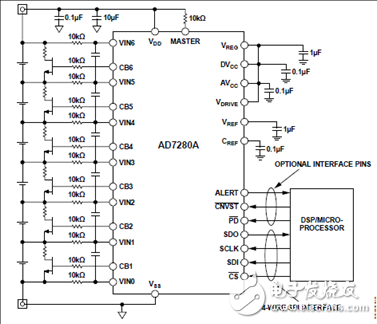
圖2.AD7280A1六電池配置圖
?
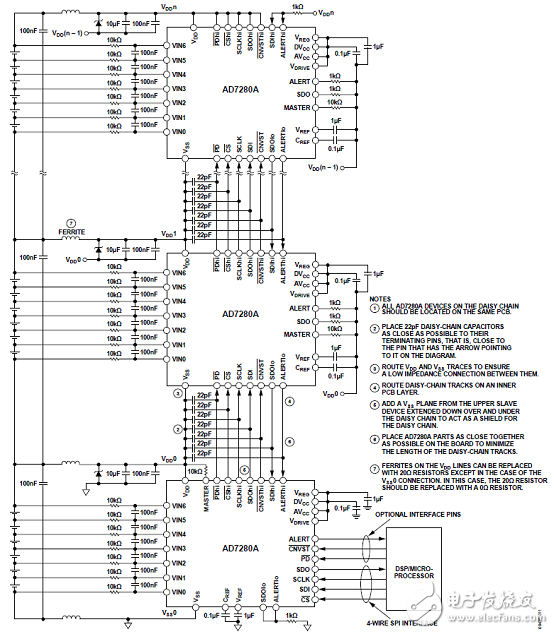
圖3.AD7280A1菊花鏈配置圖
15通道鋰電池管理模塊BMU
The 15ch BMU demo board is a tool for user to evaluate ADI Li-ion BMS chipset, including primary cellmonitoring IC AD7280A, backup cell monitoring IC AD8280, digital isolator ADuM1201, power isolatorADuM5401/03,and MCU ADuC7026. User can connect the board to Li-ion cells, connect with CAN tooltool set orPC directly, to enable in-system evaluation. This document describes basic operation of the 15ch BMU DEMO.
15通道鋰電池管理模塊BMU基本功能:
- Primary cell monitoring
o Up to 15 cell voltage inputs
o Up to 18temperature inputs
o 12-bit resolution of conversion data
o Alert of Over-Voltage, Under-Voltage, Over-Temperature, and Under-Temperature
o Self-Test
o Configurable acquisition time, conversion channels, averaging.
- Backup cell monitoring
o Up to 15 cell voltage inputs
o Up to 6 temperature inputs
o Alert outputs of Over-Voltage, Under-Voltage, and Over-Temperature
o Self-Test
- Passive cell balancing
o 100mA peak current
- 14V power supply with power enable input
- 1x CAN interface
- 1x USB interface
For GUI evaluation, user can connect the demo boardsto:
a. PC directly through USB cable. PC runs ‘15ch BMU Demo GUI (USB Version)’。
b. ZLG CANalyst (USBCAN-I or USBCAN-II) through CAN bus, then to PC. PC runs ‘15ch BMU Demo GUI (CANVersion)’。
c. Other types ofCAN tool through CAN bus, then to PC. PC runs specific GUI or analyzer tool according tothe CAN tool.
15通道鋰電池管理模塊BMU包括:
- Primary Monitoring Board
- Backup Monitoring Board
- Data Interface Board
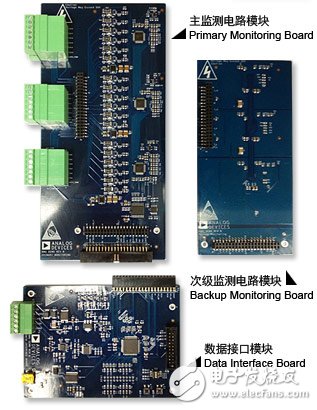
圖4.15通道鋰電池管理模塊BMU外形圖

圖5.15通道鋰電池管理模塊BMU框圖
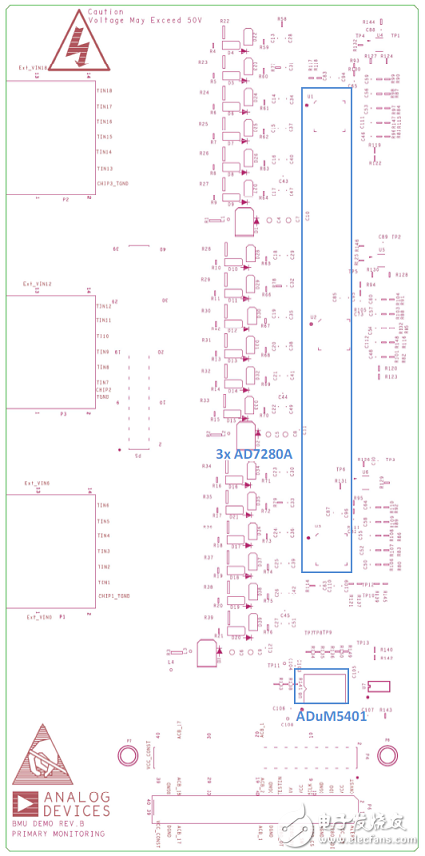

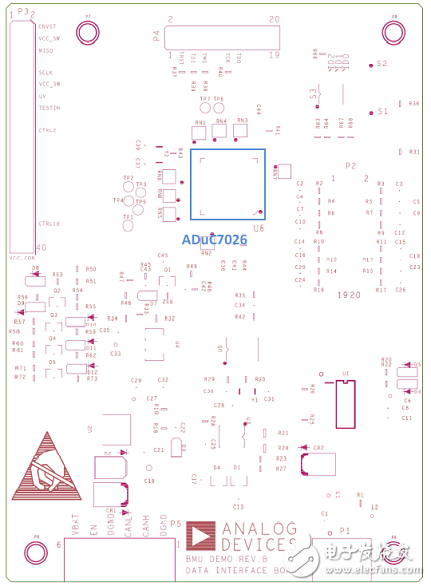
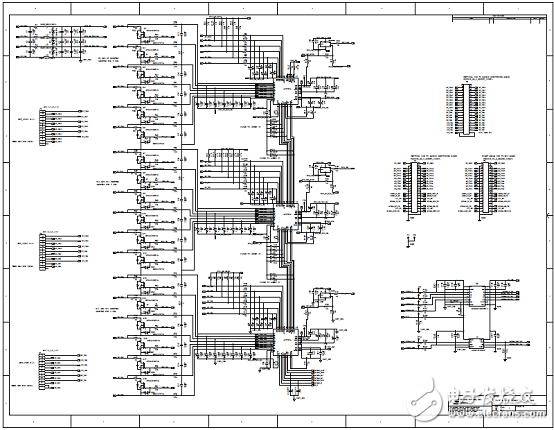
圖6.15通道鋰電池管理模塊BMU監視板電路圖
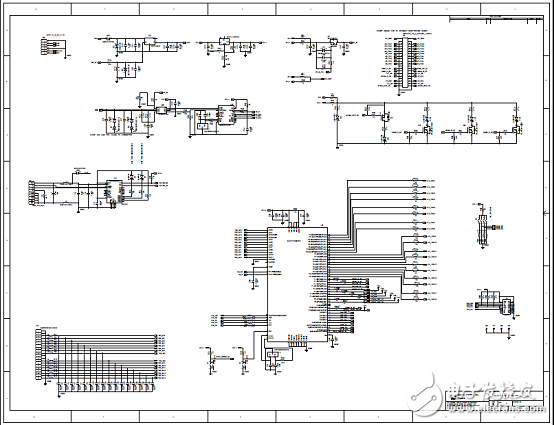
圖7.15通道鋰電池管理模塊BMU數據板電路圖
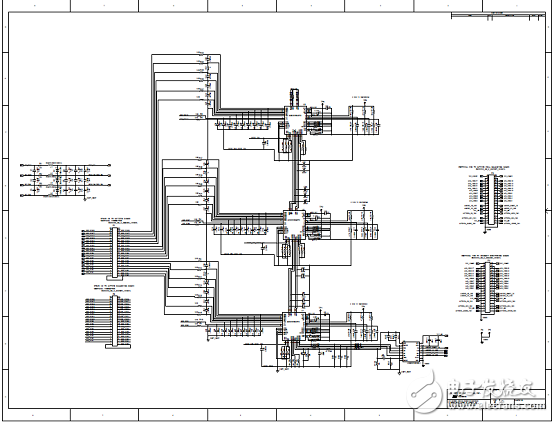
圖8.15通道鋰電池管理模塊BMU備份監視板電路圖
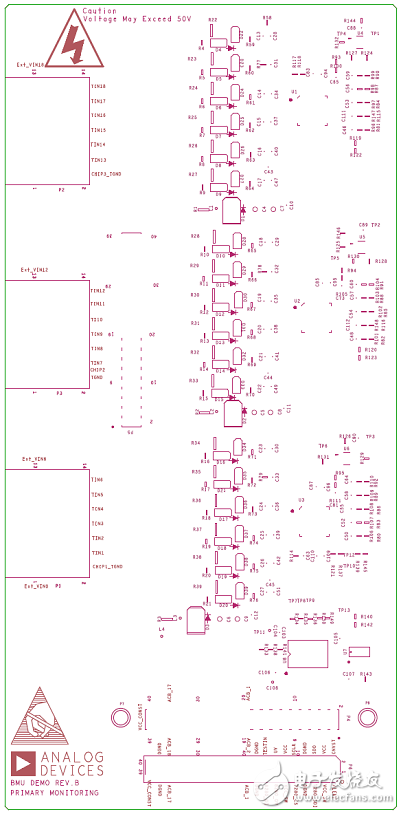
圖9.15通道鋰電池管理模塊BMU監視板PCB頂層元件布局圖
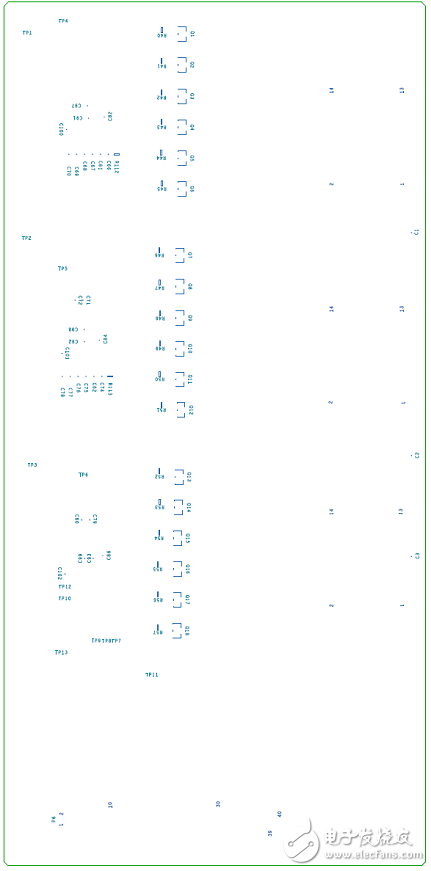
圖10.15通道鋰電池管理模塊BMU監視板PCB底層元件布局圖
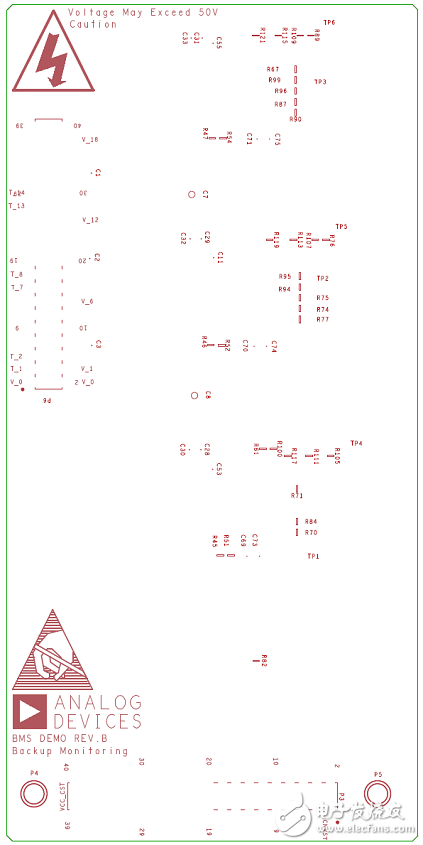
圖11.15通道鋰電池管理模塊BMU備份監視板PCB頂層元件布局圖
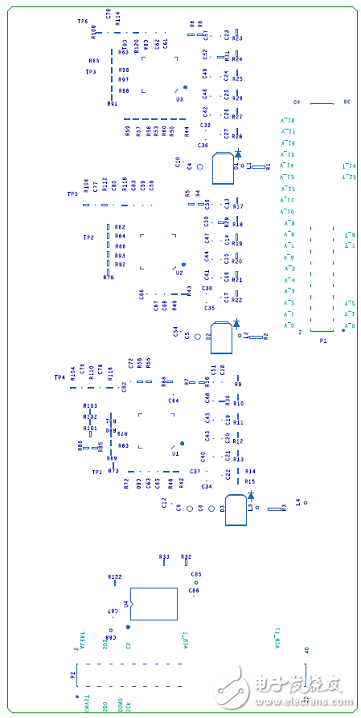
圖12.15通道鋰電池管理模塊BMU備份監視板PCB底層元件布局圖
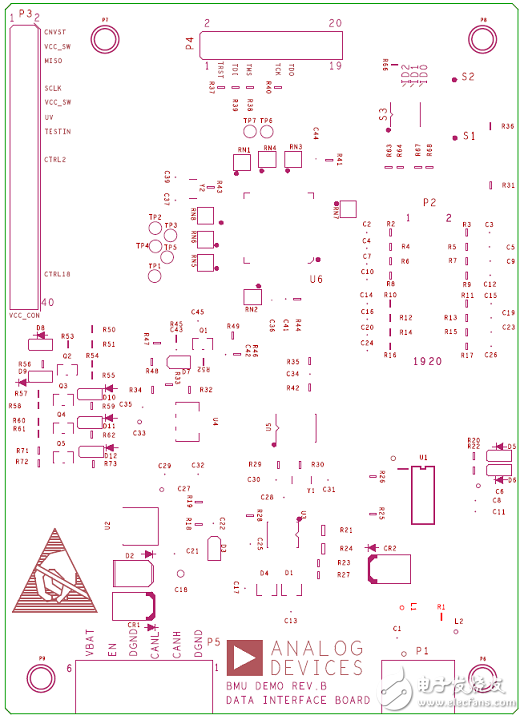
圖13.15通道鋰電池管理模塊BMU數據板PCB頂層元件布局圖
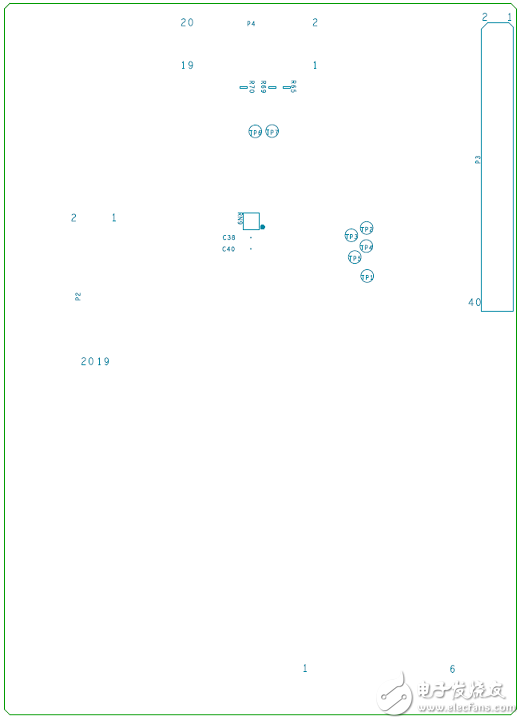
圖14.15通道鋰電池管理模塊BMU數據板PCB底層元件布局圖
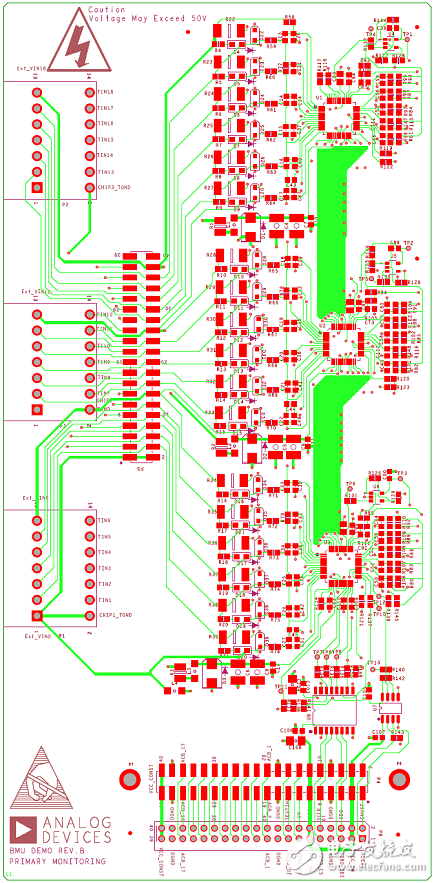
圖15.15通道鋰電池管理模塊BMU監視板PCB設計圖(1)
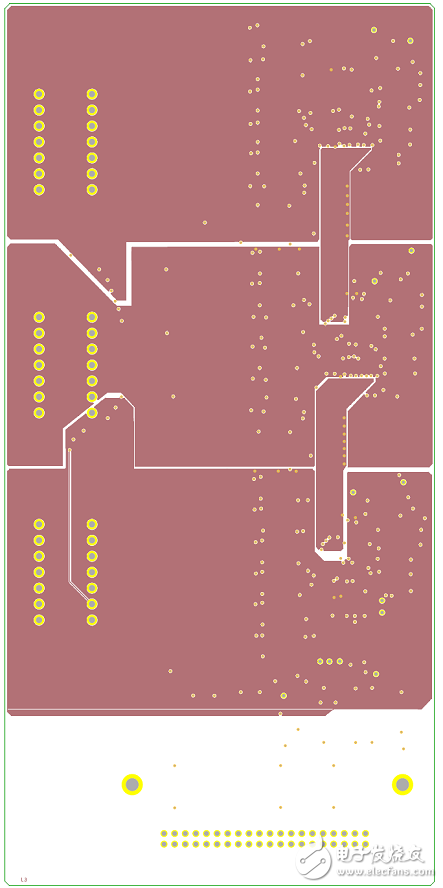
圖16.15通道鋰電池管理模塊BMU監視板PCB設計圖(2)
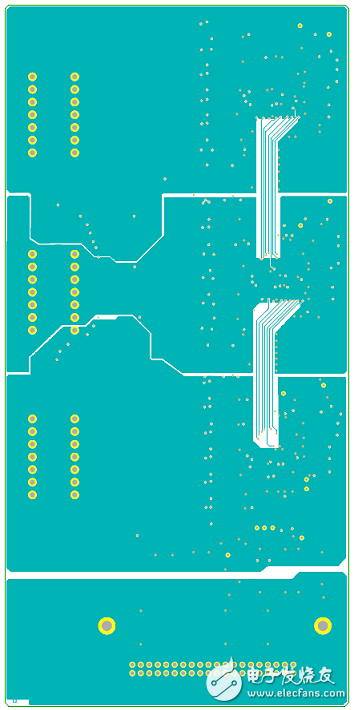
圖17.15通道鋰電池管理模塊BMU監視板PCB設計圖(3)

圖18.15通道鋰電池管理模塊BMU監視板PCB設計圖(4)
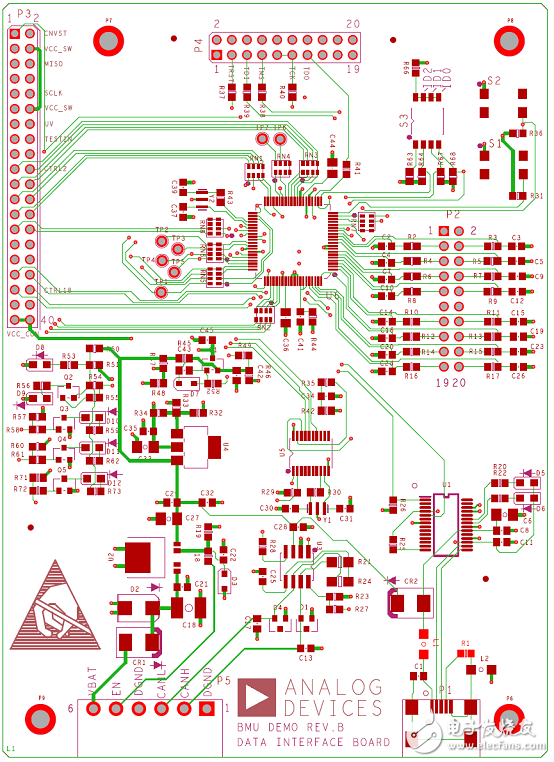
圖19.15通道鋰電池管理模塊BMU數據板PCB設計圖(1)
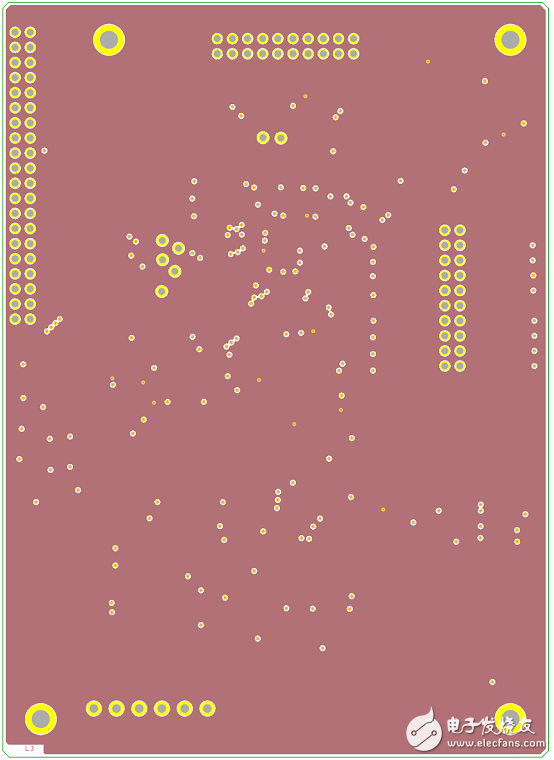
圖20.15通道鋰電池管理模塊BMU數據板PCB設計圖(2)
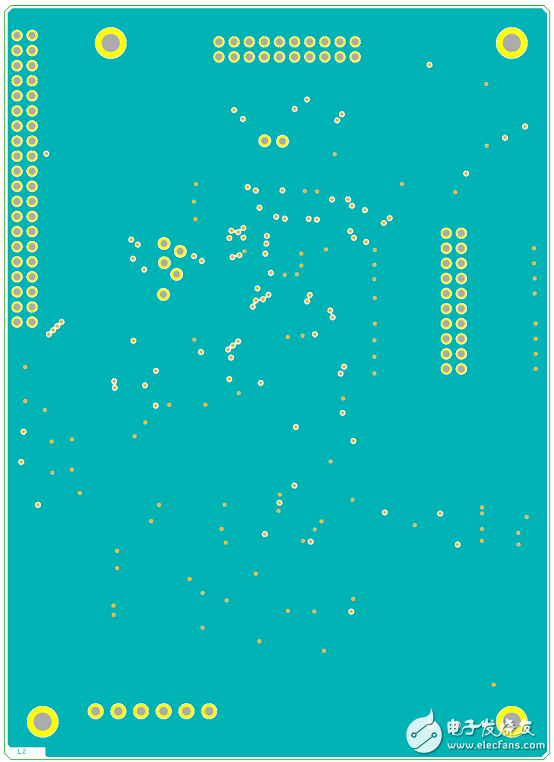
圖21.15通道鋰電池管理模塊BMU數據板PCB設計圖(3)
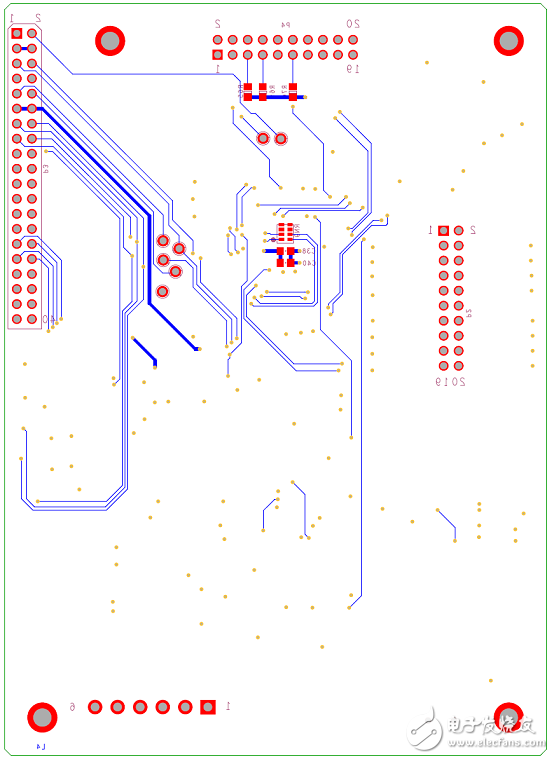
圖22.15通道鋰電池管理模塊BMU數據板PCB設計圖(4)
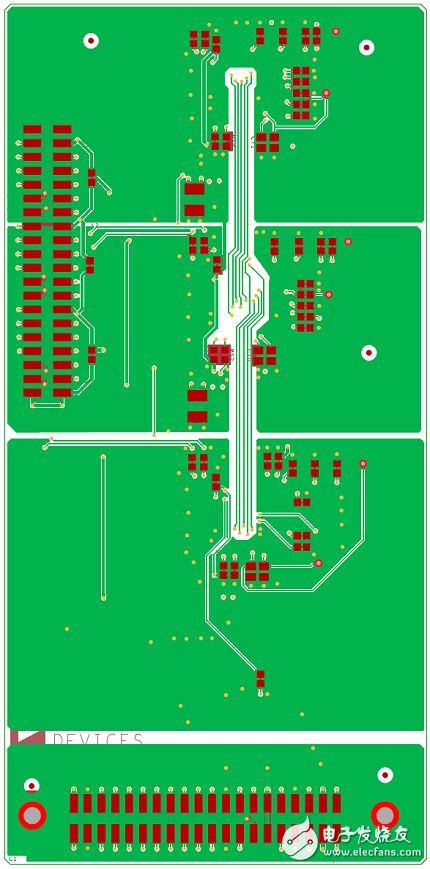
圖23.15通道鋰電池管理模塊BMU備份監視板PCB設計圖(1)
圖24.15通道鋰電池管理模塊BMU備份監視板PCB設計圖(2)
 電子發燒友App
電子發燒友App









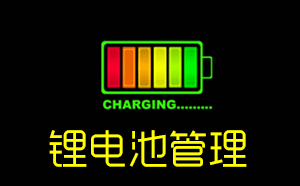












評論